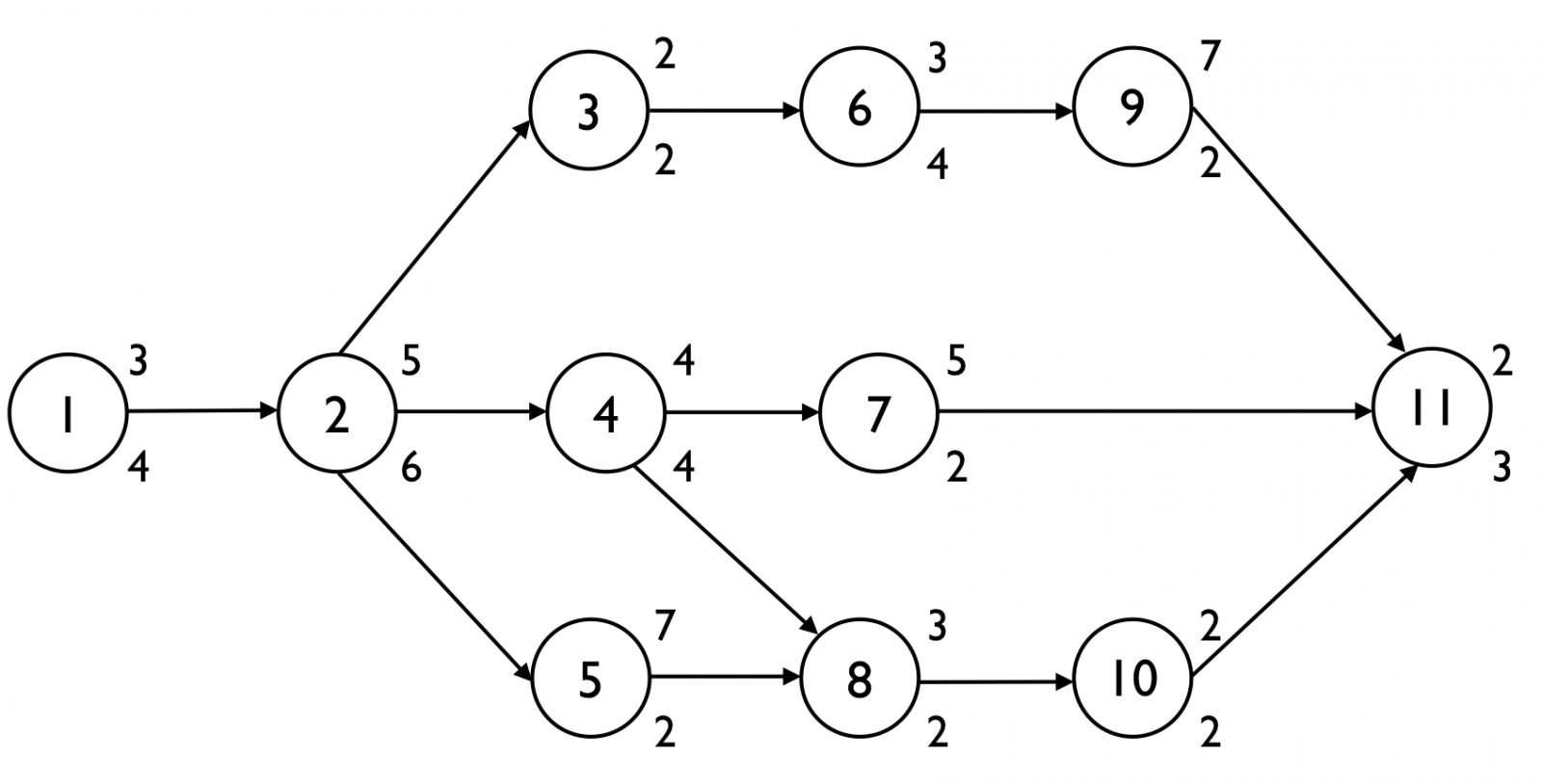Linking resources to activities: Resource availability and resource demand
When finishing this article, you can take a short "Test Yourself" quiz, to ensure you fully understood this topic.
Activities require renewable resources during their execution which are limited on a periodic basis (see “Resource types: Renewable and consumable resources”). In practice, activities need resources during their execution that are often limited in availability. In this article, the connection between the resource requirements of activities and the limited availability of these resources is discussed along the following topics:
- Resource availability: renewable resources
- Resource demand: Activity resource requirements
- Resource conflicts
Figure 1 displays a project network with 11 activities and finish-start precedence relations between them. Each number above the node denotes the estimated duration of the activity while the number below the node is used to refer to the resource demand.

Figure 1: Project network and activity data
Resource availability
Renewable resources have a limited availability for each period, which can be fixed over the complete scheduling horizon but also variable with upward or downward jumps (e.g. people are unavailable at some days). In figure 2, the fixed periodic availability of one renewable resource is given by the straight dotted line to show that maximum 6 resources (e.g. people) are available all days of the project.
Resource demand
Activities require renewable resources in order to be executed, such as a team of skilled workers, machines or tools. Allocating resources to activities links these resources and their corresponding costs to individual activities and creates value for the activity’s resource demand. In figure 2, each activity is represented by a rectangle with the length indicating the activity duration and the height denoting the renewable resource requirement/demand. The work content is defined as the product of the two, as follows:
Work = Duration x Demand
Each activity is scheduled as-soon-as-possible (i.e. an earliest start schedule, see “Scheduling projects: How to determine the critical path using activity slack calculations?”) while respecting the precedence relations of the project network of figure 1.

Figure 2: Renewable resource availability and resource demand
Resource conflict
When the demand for a resource is higher than its availability (since the resource is allocated to various activities scheduled at the same time), it is said that this resource is over-allocated and the schedule has a resource conflict. Figure 2 shows a resource conflict between period 8 and 13 due to over-allocations of resources caused by activities 3, 4, 5, 6 and 7.
© OR-AS. PM Knowledge Center is made by OR-AS bvba | Contact us at info@or-as.be | Visit us at www.or-as.be | Follow us at @ORASTalks


